Everest Base Camp Trek
The Everest Base Camp Trek is one of the most iconic and sought-after trekking routes in the world, attracting adventurers and mountain enthusiasts who wish to experience the thrill of standing at the foot of the globe's highest peak, Mount Everest (Sagarmatha). This trek is not only about reaching a physical location but also about the journey that offers stunning natural scenery, rich cultural immersion, and personal fulfillment. Here’s a detailed look at what the trek involves:
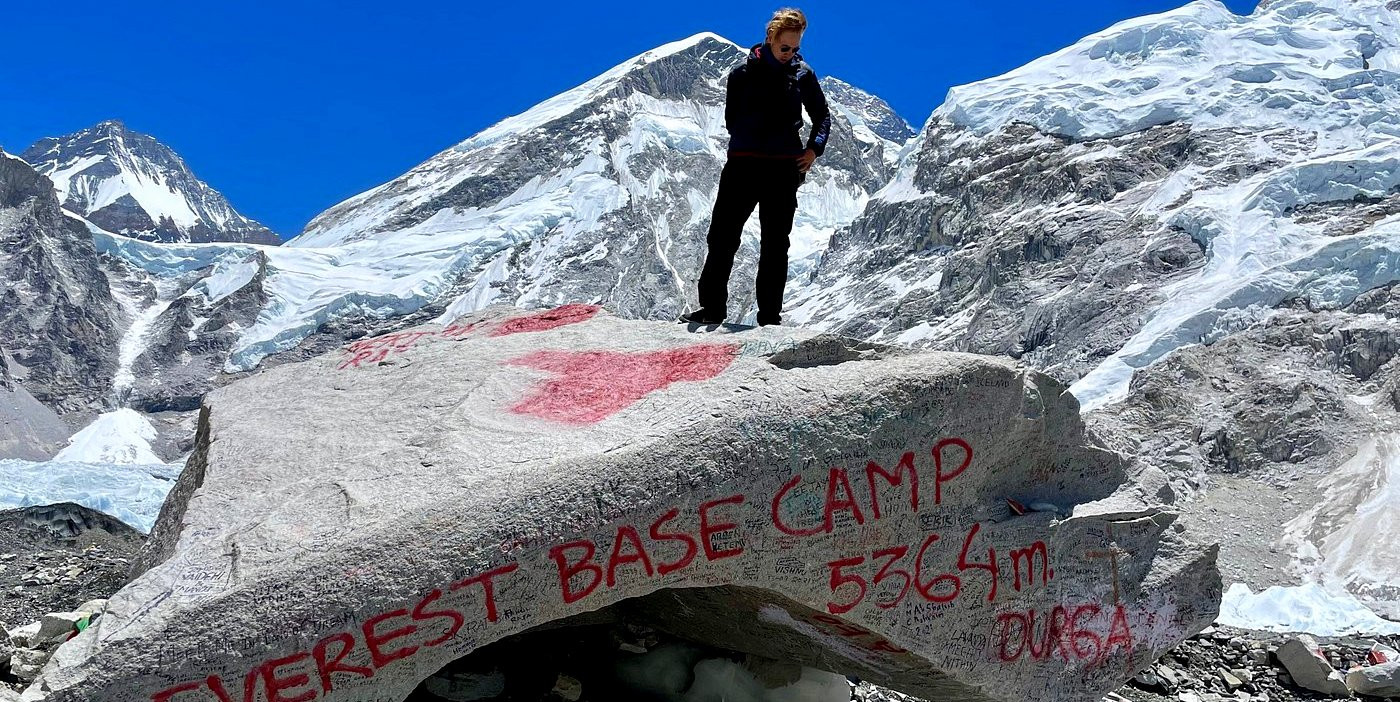
Overview
-
Duration: Typically 12-14 days
-
Difficulty Level: Challenging
-
Starting Point: Lukla
-
Max Altitude: 5,364 meters (17,598 ft) at Everest Base Camp, with an optional hike to Kala Patthar at 5,545 meters (18,192 ft) for the best views of Everest.
-
Best Season: Spring (March to May) and autumn (September to November)
Highlights
-
Scenic Flight to Lukla: The trek starts with a short but thrilling flight to Tenzing-Hillary Airport in Lukla, one of the most dangerous airports in the world due to its short runway and dramatic location.
-
Sherpa Culture and Hospitality: The route passes through traditional Sherpa villages like Namche Bazaar, Tengboche, Dingboche, and others. Trekkers can explore monasteries and museums and get a firsthand look at the Sherpa way of life.
-
Stunning Himalayan Views: Apart from Everest, you get spectacular views of other high peaks like Lhotse, Nuptse, Ama Dablam, and Thamserku.
-
Sagarmatha National Park: This UNESCO World Heritage Site offers rich biodiversity, including pine forests, rhododendron flowers, and wildlife such as snow leopards and red pandas.
-
Everest Base Camp: Reaching the base camp itself is an emotional and exhilarating experience, offering close views of the Khumbu Icefall and glacier.
-
Kala Patthar: Many trekkers consider the hike to Kala Patthar as a highlight for the best views of Everest's south face and surrounding peaks.
The Everest Base Camp Trek with Relax Getaways means enjoying expert guidance, comprehensive support, and an emphasis on safety and sustainability, making your journey not just a trek but a truly transformative adventure. Whether you're a seasoned trekker or a determined beginner, this trek promises an unforgettable challenge and the thrill of a lifetime.
Annapurna Circuit Trek
The Annapurna Circuit Trek is a classic adventure in Nepal, renowned for its incredible diversity in landscapes and cultural experiences. This trek encircles the Annapurna massif, providing trekkers with an immersive journey through subtropical jungles, high mountain passes, and arid plateaus that look straight out of Tibet. Known for its breathtaking mountain panoramas and the rich cultural tapestry of the Gurung, Manangi, and Thakali communities, the Annapurna Circuit is a must-do for serious trekkers worldwide.
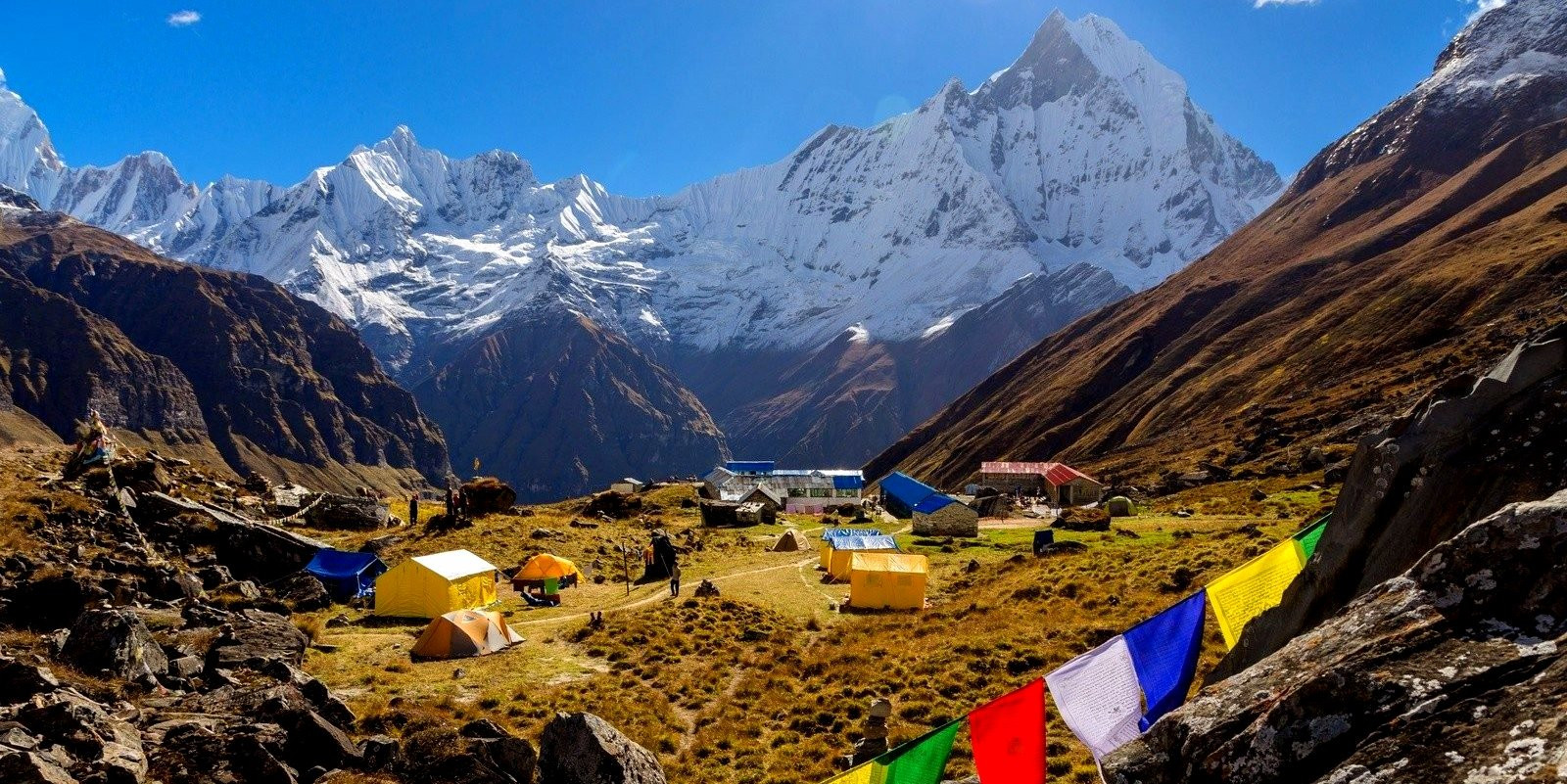
Overview
-
Duration: Typically 12-21 days, depending on the starting and ending points and variations in the route.
-
Difficulty Level: Moderate to challenging
-
Starting Point: Besisahar or Bhulbhule
-
Max Altitude: 5,416 meters (17,769 ft) at Thorong La Pass
-
Best Season: Spring (March to May) and autumn (September to November)
Highlights
-
Diverse Terrain: The trek passes through a variety of climates, from lush rice paddies and subtropical forests in the lowlands to high alpine peaks and semi-arid deserts.
-
Thorong La Pass: Crossing Thorong La, one of the highest trekking passes in the world, is an exhilarating challenge and a highlight for many trekkers.
-
Cultural Richness: Visit ancient Buddhist monasteries and experience local traditions and customs in mountain villages.
-
Natural Hot Springs: The hot springs in Tatopani offer a soothing experience, perfect for relaxing tired muscles after days of trekking.
-
Mountain Views: Spectacular views of the Annapurna range, Dhaulagiri, Manaslu, Machhapuchhre (Fishtail), and many other peaks.
Annapurna Circuit Trek with Relax Getaways means having the backing of experienced guides and porters who not only enhance your journey with their knowledge and skills but also provide an insightful look into the heart and soul of Nepal. This trek is more than just a hiking experience; it's an exploration of one of the most geographically and culturally diverse regions of the Himalayas, promising memories that will last a lifetime.
Langtang Valley Trek
The Langtang Valley Trek is a beautifully serene and relatively short trek that offers a close-up look at the Himalayan peaks and provides a deeper insight into the culture of the native Tamang people. Located north of Kathmandu, this trek is ideal for those looking to experience the majesty of the Himalayas without the longer duration required for more extensive treks like the Everest Base Camp or Annapurna Circuit.
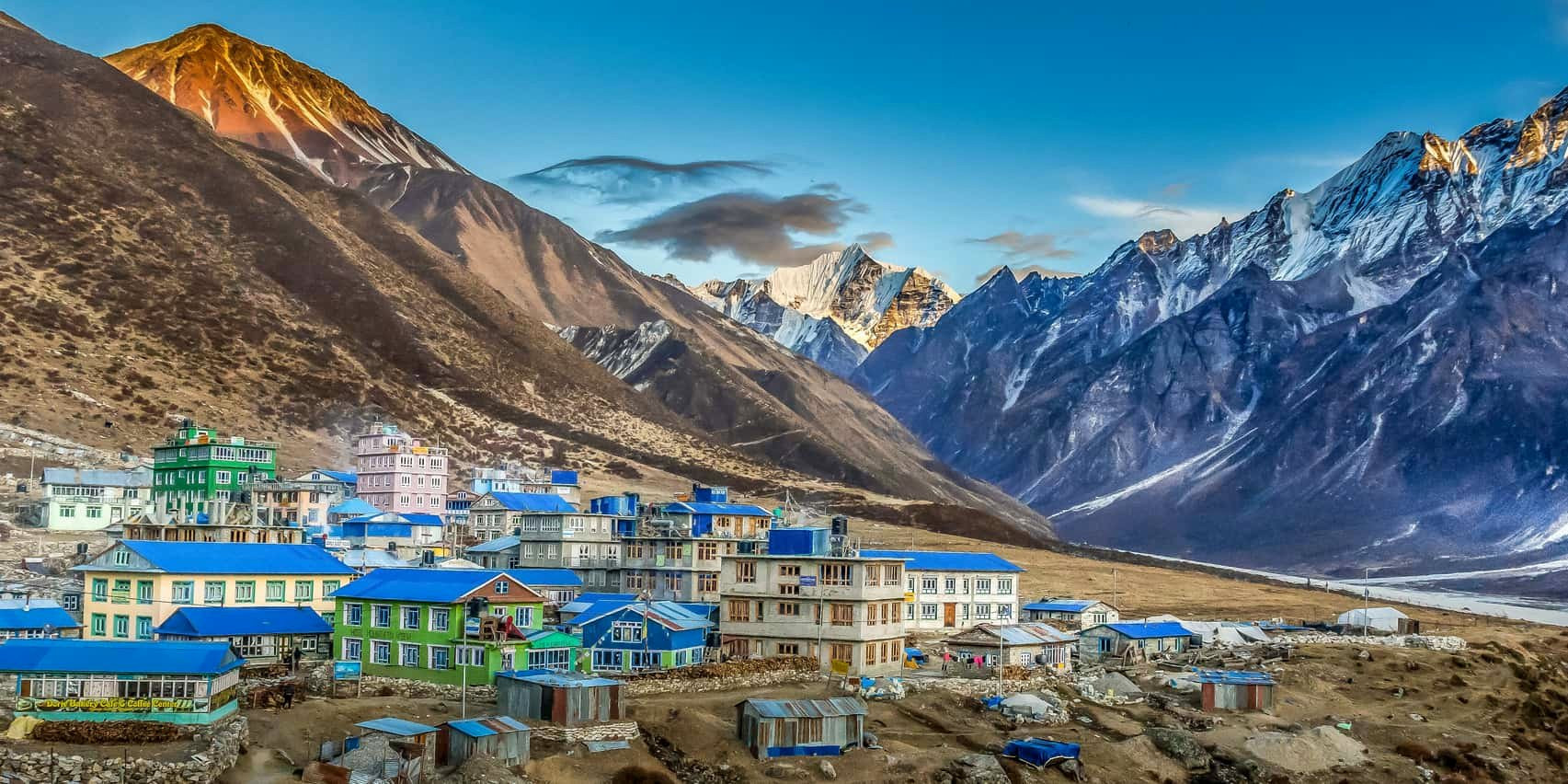
Overview
-
Duration: Typically 7-12 days
-
Difficulty Level: Moderate
-
Starting Point: Syabrubesi
-
Max Altitude: 3,870 meters (12,697 ft) at Kyanjin Gompa
-
Best Season: Spring (March to May) and autumn (September to November)
Highlights
-
Accessible Location: Just a day’s drive from Kathmandu, this trek is more accessible than most, making it a great option for those with limited time.
-
Spectacular Views: Enjoy stunning views of Langtang Lirung, Langtang Ri, and other Himalayan peaks.
-
Rich Culture: The region is heavily influenced by Tibetan culture due to its proximity to Tibet. Trekkers can visit local monasteries and see the lifestyle of the Tamang and Sherpa communities.
-
Diverse Ecology: The trek passes through Langtang National Park, where you can observe a variety of flora and fauna, including the chance to spot the rare red panda.
-
Kyanjin Gompa: This ancient Buddhist monastery is a significant and serene spot, ideal for rest and exploration days.
Langtang Valley Trek with Relax Getaways ensures you have a professionally guided and culturally enriching experience. Our local guides are not only knowledgeable about the natural environment but also deeply connected to the cultural heritage of the area. This trek is a perfect blend of natural beauty, cultural exposure, and physical activity, suitable for those who wish to experience the Himalayas in a more intimate and less crowded setting.
Manaslu Circuit Trek
The Manaslu Circuit Trek is rapidly gaining popularity as a spectacular trekking route in the heart of the Himalayas, known for its solitude and beauty. It offers an alternative to the more crowded treks of Annapurna and Everest, presenting an off-the-beaten-path experience that winds around Mount Manaslu, the world's eighth-highest peak. This trek showcases everything from lush subtropical forests to the stark, high mountain landscape, offering a deeply immersive experience into both the natural and cultural tapestry of Nepal.
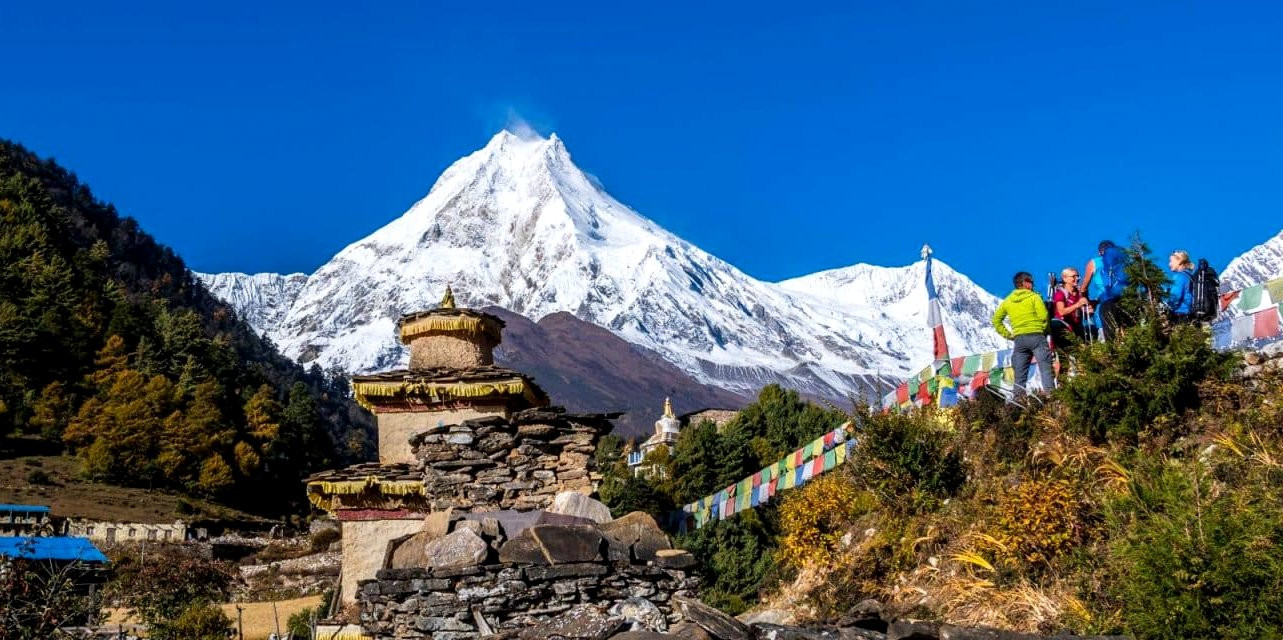
Overview
-
Duration: Typically 14-18 days
-
Difficulty Level: Challenging
-
Starting Point: Soti Khola, after a drive from Kathmandu
-
Max Altitude: 5,106 meters (16,752 ft) at Larkya La Pass
-
Best Season: Spring (March to May) and autumn (September to November)
Highlights
-
Remote and Less Crowded: The Manaslu Circuit remains less traveled compared to Nepal’s more famous treks, offering a more peaceful trekking experience.
-
Dramatic Landscapes: The trek offers a stunning variety of scenery, from verdant green valleys to rugged high-altitude landscapes.
-
Cultural Richness: Experience the authentic Tibetan-style culture in villages that are only accessible on foot.
-
Larkya La Pass: Crossing this high pass provides thrilling challenges and spectacular views of Manaslu, Himlung Himal, Cheo Himal, and Kang Guru.
-
Buddhist Monasteries and Architecture: Explore ancient monasteries, chortens, and mani walls that are integral to the cultural landscape of the region.
Taking the Manaslu Circuit Trek with Relax Getaways allows you to experience this incredible adventure with the assurance of safety, comfort, and an authentic connection to the natural and cultural environments you’ll explore. Our expert team ensures that every aspect of the trek is managed professionally, from securing all necessary permits to providing eco-friendly and culturally sensitive travel practices. This trek is not just a journey through the mountains but a profound exploration of one of the most untouched and breathtaking parts of Nepal.
Ghorepani Poon Hill Trek
The Ghorepani Poon Hill Trek is one of the most popular and accessible treks in Nepal, renowned for its stunning panoramic views of the Annapurna range. This trek is particularly famous for the spectacular sunrise from Poon Hill, where the Himalayas light up with shades of gold and pink in the early morning light. Ideal for those who have limited time or prefer a less strenuous trekking experience, the Ghorepani Poon Hill trek offers a delightful blend of natural beauty and cultural exposure.
.jpg)
Overview
-
Duration: Typically 4-5 days
-
Difficulty Level: Easy to moderate
-
Starting Point: Nayapul, a short drive from Pokhara
-
Max Altitude: 3,210 meters (10,531 ft) at Poon Hill
-
Best Season: Spring (March to May) and autumn (September to November)
Highlights
-
Panoramic Mountain Views: Experience awe-inspiring views of Annapurna South, Annapurna I, Dhaulagiri, Machhapuchhre (Fishtail), and other peaks from Poon Hill.
-
Charming Villages: Trek through picturesque Gurung and Magar villages, getting a glimpse into the rural lifestyles of the Central Himalayan people.
-
Rhododendron Forests: Especially in spring, the forests along the trek are ablaze with the bloom of rhododendrons and other wildflowers.
-
Accessible Trekking: This trek is suitable for all ages and fitness levels, providing a manageable challenge for beginners or those with limited time.
-
Cultural Experience: Engage with the warm and hospitable local communities and enjoy traditional Nepalese cuisine.
Joining the Ghorepani Poon Hill Trek with Relax Getaways is an excellent way to experience the beauty of the Annapurna region without the commitment of a long and strenuous trek. Our expert guides will ensure you have a safe, enjoyable, and informative trekking experience, making your short journey through the Annapurna foothills unforgettable. Whether you’re a seasoned trekker looking for a shorter journey or a first-time hiker wanting to experience the Himalayas, this trek is a perfect choice.
Tips for Top 5 Spring Treks in Nepal
A trek in the spectacular landscapes of Nepal during the spring season offers an unparalleled experience. However, each trek presents its own set of challenges and wonders. Here are some essential tips to help you make the most out of the top 5 spring treks in Nepal:
General Preparation and Safety
-
Acclimatize Properly: Take sufficient time for acclimatization to avoid altitude sickness, especially on higher treks like Everest Base Camp and Annapurna Circuit.
-
Secure Comprehensive Travel Insurance: Ensure it covers high-altitude trekking, emergency evacuation, and medical expenses.
-
Stay Hydrated: Drink plenty of water and avoid alcohol, especially at higher altitudes to mitigate the risks of altitude sickness.
Gear and Packing
-
Pack Wisely: Bring appropriate gear for varying temperatures—layers for cold and wind, waterproof clothing, and a sturdy pair of hiking boots.
-
Travel Light: Especially for the longer treks, packing light will help maintain your stamina and mobility. Consider packing essentials that serve multiple purposes.
-
Essential Gear: Include a good quality sleeping bag, trekking poles, a water purification system, and a first-aid kit.
Cultural Etiquette and Engagement
-
Respect Local Customs: Show respect towards local traditions and practices. Dress modestly and ask for permission before taking photographs of people or religious sites.
-
Support Local Economy: Opt to stay in local teahouses, buy local products, and hire local guides and porters. This not only enriches your experience but also contributes to the local communities.
Environmental Considerations
-
Follow Leave No Trace Principles: Keep the trails clean, dispose of waste properly, and avoid disturbing wildlife.
-
Be Prepared for All Weather Conditions: Spring can be unpredictable; prepare for sudden weather changes by carrying rain gear and extra layers.
Navigation and Local Interaction
-
Hire a Local Guide: Especially for less commercial routes like the Manaslu Circuit, a knowledgeable guide is not only mandatory but also enhances safety and cultural understanding.
-
Check Local Conditions: Before and during the trek, keep updated with local weather and trail conditions, particularly concerning high passes like Thorong La and Larkya La.
Health and Well-Being
-
Prepare Physically: Engage in preparatory hikes and cardiovascular training months before your trip to build endurance and strength.
-
Monitor Your Health: Pay close attention to your body’s response to altitude and exertion. Seek medical advice promptly if you feel unwell.
Applying these tips across the top 5 spring treks in Nepal will help ensure a memorable and rewarding trekking experience. Each trek has unique challenges and delights, and being well-prepared allows you to fully enjoy the majestic landscapes and rich cultural tapestry of Nepal.
Among the top 5 spring hikes in Nepal—Everest Base Camp, Annapurna Circuit, Langtang Valley, Manaslu Circuit, and Ghorepani Poon Hill—are unique chances to discover the stunning scenery and great cultural history of the Himalayas. Thanks to the balmy temperatures, clear skies, and vivid natural beauty, spring is perfect for these activities. These trips offer unforgettable experiences that echo long after the journey ends, whether you find high-altitude hiking difficult or the appeal of age-old societies. Respecting local customs, preparing well, and appreciating the natural scenery will characterize your amazing Himalayan trips.
FAQs for Top 5 Spring Treks in Nepal
Q: What is the best time to go trekking in Nepal?
A: The best seasons for trekking in Nepal are spring (March to May) and autumn (September to November). Spring offers warm weather and blooming rhododendrons, making the mountains particularly beautiful.
Q: Do I need a guide for trekking in Nepal?
A: While it's possible to trek solo in some areas, hiring a guide is highly recommended, especially for remote and restricted areas like Manaslu. Guides provide valuable insights, enhance safety, and help communicate with local communities.
Q: What permits are needed for trekking in Nepal?
A: Most treks require a TIMS (Trekkers' Information Management System) card and a national park or conservation area permit. Restricted areas like Manaslu also require special permits that can only be obtained through registered trekking agencies.
Q: How should I prepare physically for a trek?
A: Physical preparation depends on the trek’s difficulty, but generally, you should engage in cardiovascular exercises like hiking, jogging, cycling, and swimming for several months before your trip. Strengthening exercises for legs, core, and endurance training are also beneficial.
Q: What should I pack for a spring trek in Nepal?
A: Essential items include sturdy trekking boots, layers of breathable clothing, a waterproof jacket, a sleeping bag suitable for cold temperatures, a first aid kit, sunscreen, and sunglasses. Don’t forget to pack a good quality backpack and trekking poles.
Q: How do I deal with altitude sickness?
A: To prevent altitude sickness, ascend slowly, acclimatize properly with planned rest days, stay hydrated, and avoid alcohol and smoking. Recognize the symptoms early and descend to a lower altitude if they worsen.
Q: What are the accommodation options on the treks?
A: Most popular treks offer teahouse accommodations, providing basic rooms and meals. Remote treks may require camping, for which you need to carry or arrange tents and food supplies.
Q: Can I charge electronic devices during the trek?
A: Yes, many teahouses in popular trekking areas have facilities for charging electronic devices for a small fee. However, it’s wise to carry extra batteries or a portable power bank.
Q: Is vegetarian or vegan food available on the treks?
A: Most teahouses can cater to vegetarian diets, and some can also accommodate vegan needs, although options may be limited. It’s a good idea to discuss dietary requirements with your guide or the teahouse in advance.
Q: What are the emergency medical facilities like on the treks?
A: Basic medical facilities are available in larger villages, and many guides are trained in first aid. In case of severe illnesses or injuries, evacuation by helicopter to Kathmandu, which has better medical facilities, might be necessary.
For the Nepal tour, please click here.
If you are looking for different kinds of Nepal Tours or Trekking Packages, feel free to contact us.
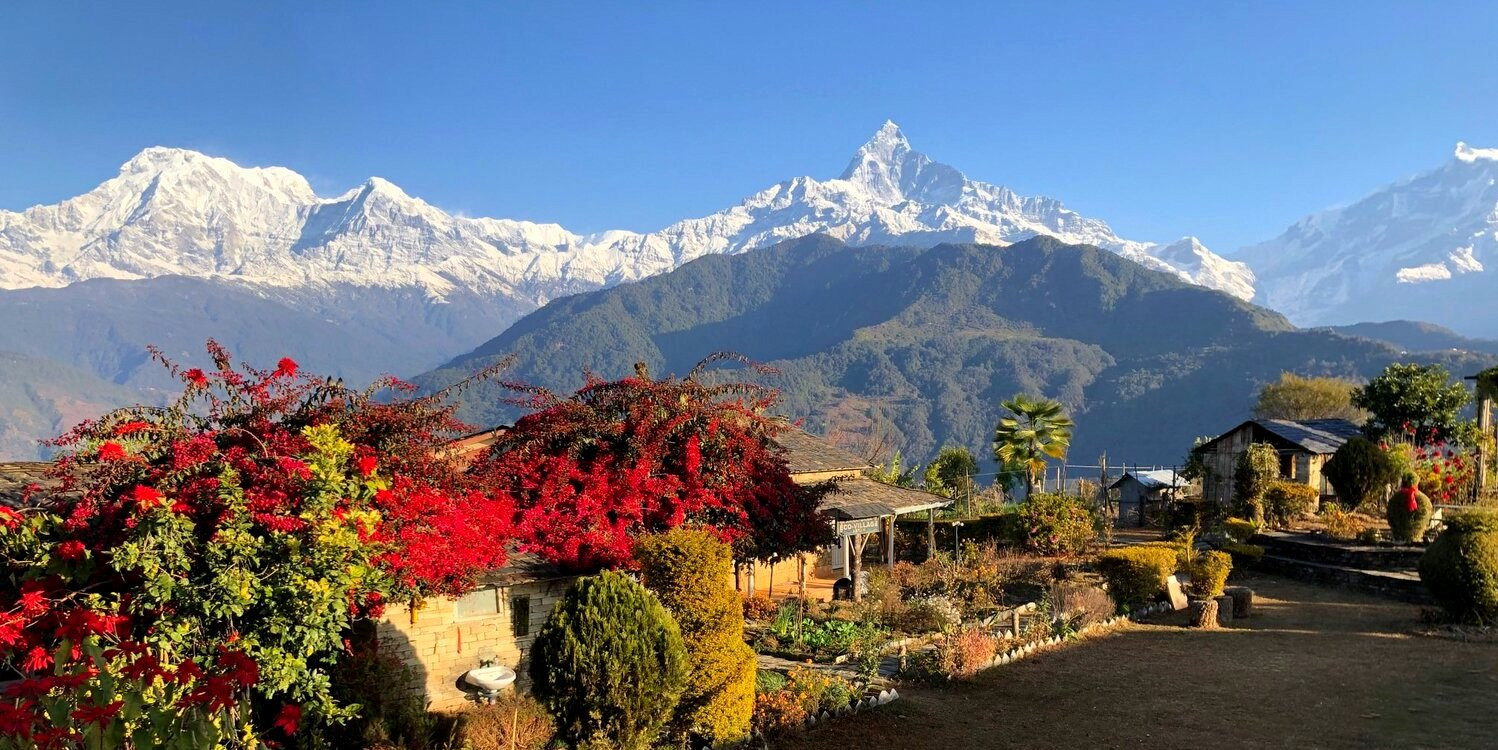





.jpg)